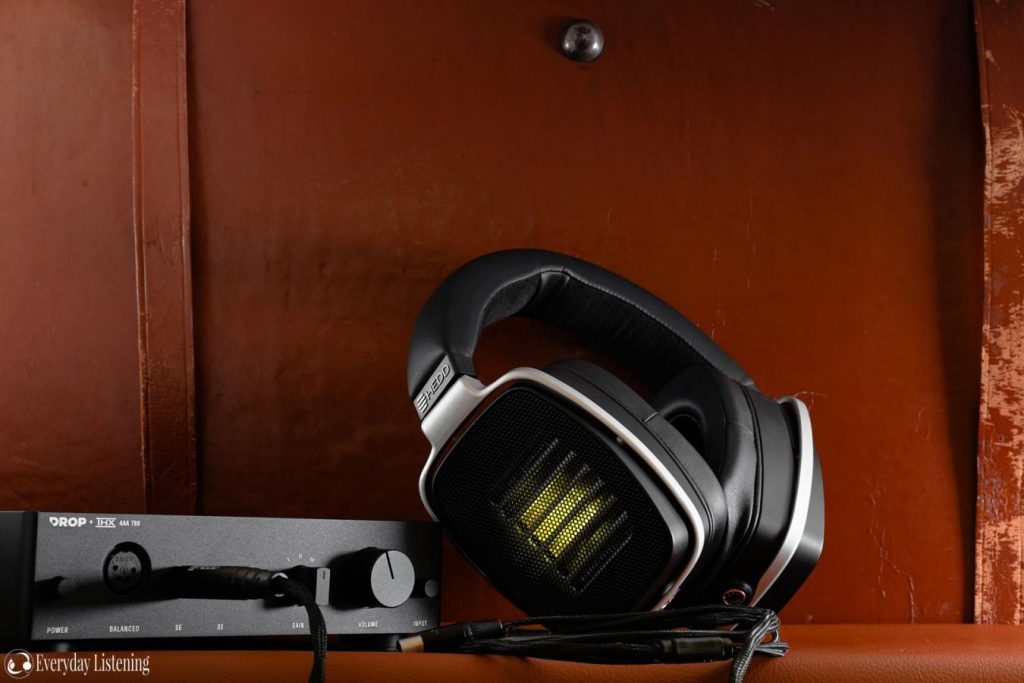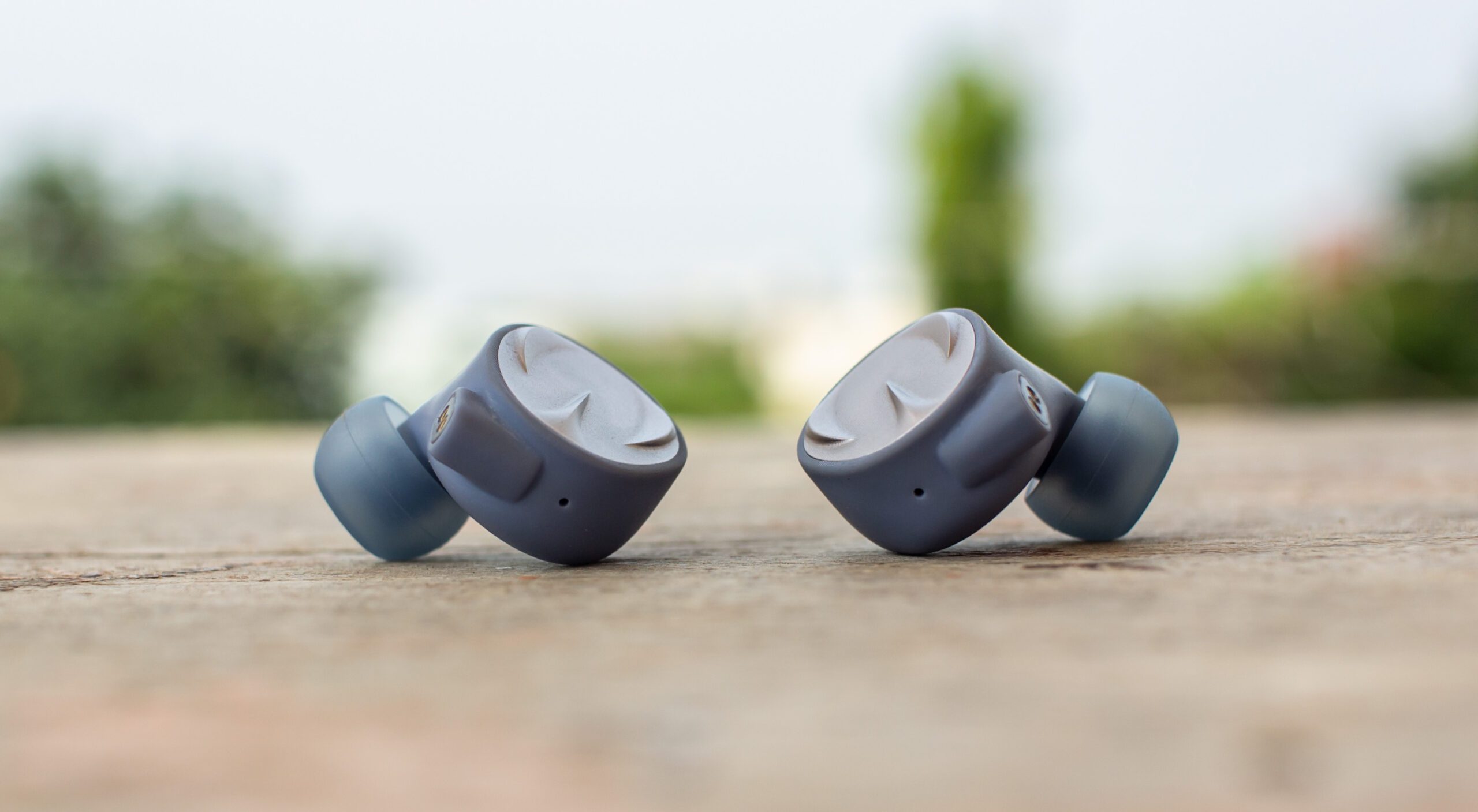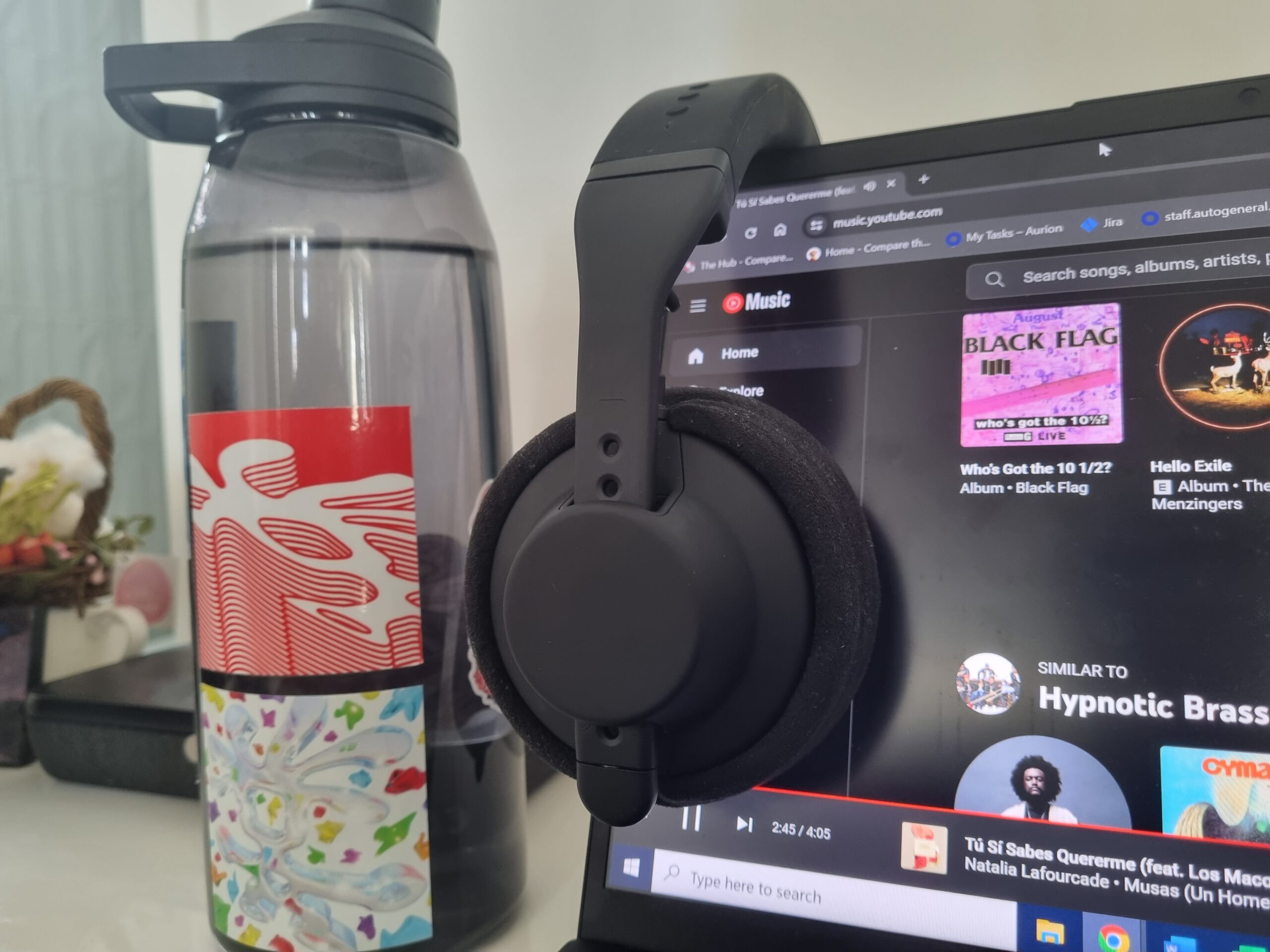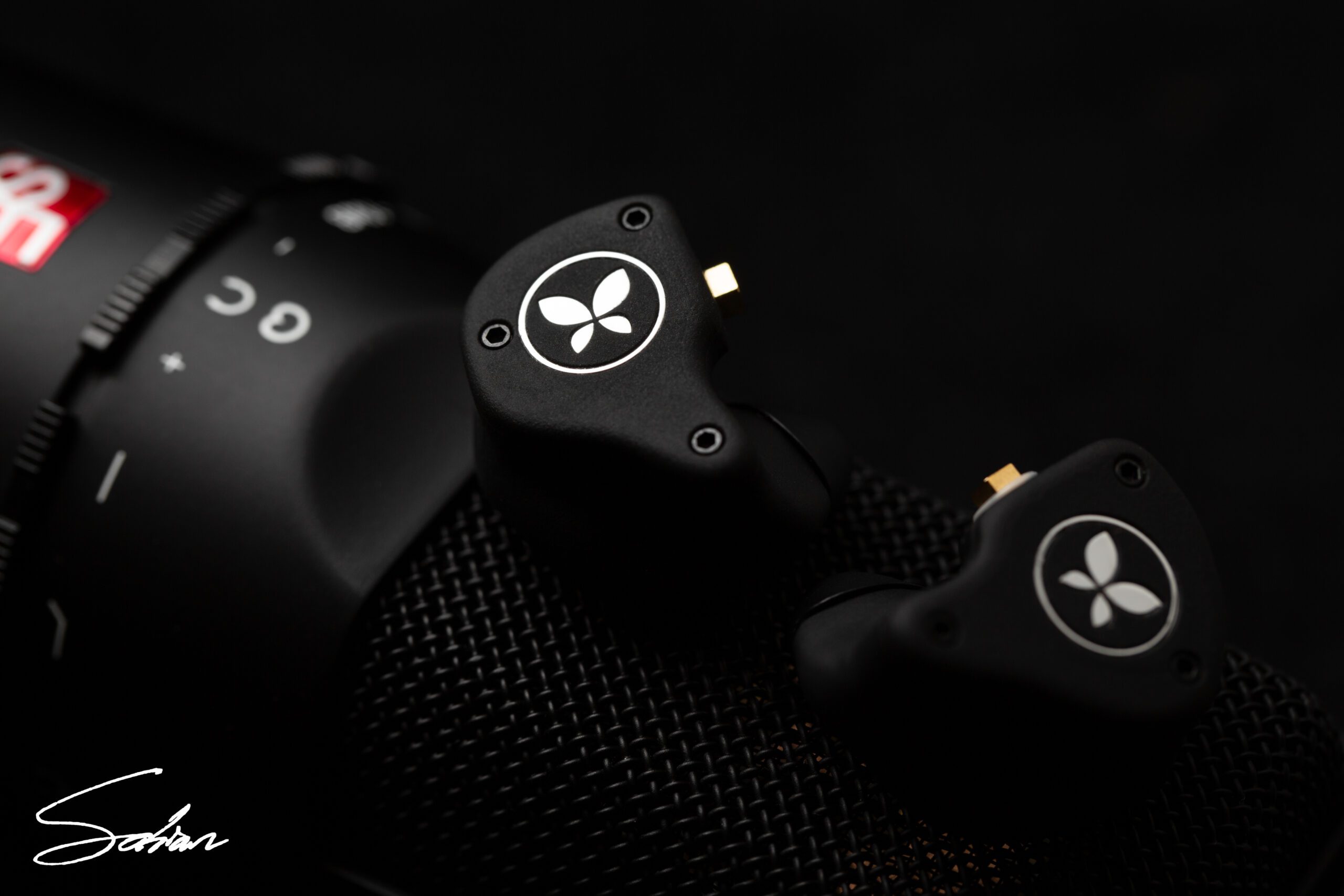Sound –
Tonality –
The HEDDphone has been well-reviewed online and from a tonality and overall sound signature point of view, I would agree with most of the content already out there. This is a very well-balanced headphone with an uptick of body in the lower-midrange, a sizeable 6k dip and an upper-treble boost. The result is a superb sense of smoothness and general refinement set to great energy and headroom while avoiding intensity and sharpness. Elsewhere, it represents a very even and coherent presentation. I will say that, looking at measurements, I was expecting a much smoother and perhaps boxier sound. However, in listening, the very agile note presentation means that the HEDDphone comes across as nowhere near as coloured as measurements may suggest. It retains an impressively accurate timbre and a very clean tone throughout, a powerful expression and truly summit-fi level technical performance. Notes are characterised by ultra-concise attack that grants almost unparalleled definition. This is surely a double-edged sword, as the HEDDphone does sound a little less natural than most in this regard, but with huge benefit to fine detail retrieval that makes it well worthwhile to my lucky ears.
Bass –
The HEDDphone strikes a good balance in the lows, offering a balanced quantity with the mids and treble but also enough extension and power to satiate those with a hunger for a bit more oomph. Sub-bass offers excellent deep-reaching extension, especially for an open-back. Some competitors a bit more guttural, but most also have more bass emphasis in general and do not strike the same balance as the HEDDphone. There remains an uptick of quantity in the sub-bass that provides a clear and highly-defined rumble alongside tight, powerful slam and a satisfying pressure. The mid-bass is even and the upper-bass feeds smoothly into the midrange creating a natural timbre and tone in addition to laying the foundation for a clean midrange presentation.
Due to the uptick of sub-bass, notes come across slightly thicker and bolder than neutral so don’t let descriptors such as neutral or accurate scare you off, this isn’t a thin or bass deficient headphone in the slightest. As aforementioned, the note presentation is very agile and concise, providing an immensely well-defined and separated bass presentation. It also helps to aid engagement, delivering excellent pace and organisation in addition to a little more punch than one might expect given the mostly flat tuning. Attack is quick and aggressive while decay is agile, both contributing to a presentation that some may consider to prioritises timing over body and texture.
In turn, it doesn’t offer the huge dynamics and mid-bass texture you might see on something like Fostex’s Biodyna headphones; but you do get excellent detail retrieval even on fast-paced and complex tracks and a robust note structure instigated by the sub-bass lift. I have heard some dynamics and planars that offer a more visceral response here, but the appeal of the HEDDphone is undoubtedly its ability to balance both accuracy and engagement. It doesn’t pound the head with pressure or emphasis, but also doesn’t skimp on extension or note weight either. Rather, the HEDDphone presents an even and natural tuning expressed in a highly tactile manner.
Mids –
Besides the hump around 700Hz and the 6k dip, the midrange appears to me quite balanced and linear. I also don’t find the upper-midrange remotely recessed and wouldn’t personally want more quantity here as I would already consider this to err slightly on the revealing and intimate side. However, a thin and bright headphone this is not, the HEDDphone benefits from a balanced bass with zero spill or tonal colouration and similarly, strong separation and definition. However, due to the lower-midrange hump, vocals are brought a touch forward and are presented with enhanced size, power and body.

Accordingly, clarity is imbued by the agile note presentation rather than any form of brightness, so midrange definition and clarity remain superb despite a reasonably progressive and smooth top-end. Compared to the Focal Clear that many regard to be the gold-standard of linearity, the HEDD’s individual note presentation and positioning aren’t quite as natural, but it also sounds more coherent with a fuller and more wholly resolved note structure. The Clear sounds a touch strained by comparison, with smaller vocal size and a sharper articulation. The HEDD benefits from gossamer smooth articulation that I feel was an intentional decision.
For the HEDDphone beautifully balances a superlative, revealing presentation with all-day listenability. There is no edge or sharpness in its portrayal, no sibilance nor overt forwardness or glare. The HEDDphone doesn’t strike as bright in any sense, simply highly revealing, resolving and slightly forward. Again, better timbre can be found, there is colouration here most obvious under direct comparison to market leaders in this segment, and the note presentation is markedly different to most as well. Still, few are able to balance so superbly tri-frequency balance, coherence and clarity as the HEDDphone. It is a sound that can be enjoyed for hours with zero fatigue whilst simultaneously picking apart every minute detail present in the track.
Highs –
Most would consider the top-end to characterise the HEDDphone, but really, its unique style of note presentation manifests throughout. Still, it is surely most overtly apparent here. I will preface that I’m no stranger to high-end audio, I’ve personally purchased and reviewed some of the best in the business. But the technical performance on the HEDDphone still left me floored. Indeed, the HEDDphone exudes an electrostatic-like quality, superficially with its lighter note weight, and the godly quick and clean transient response that makes Estats so sought after. You also get first-class top-octave extension in addition to a progressive upper-treble lift that makes the HEDDphone a paragon of air, sparkle and resolution. Perhaps most importantly, it isn’t a bright headphone and treble never left my ears ringing or fatigued. In fact, the foreground is rather smooth and refined, with a sharp 6k dip taking the edge off percussion and note attack. These qualities together grant a slightly unconventional presentation.
For instance, you get a harder-edged and perhaps slightly more focused note on the more traditional 6k focused Clear, TH909 and HD800S. Meanwhile, the HEDDphone’s portrayal is more subject to its agile note presentation and upper-harmonic lift granting a lighter note weight and greater shimmer. In turn, it is far from a blunted presentation, detail presentation is well-defined in the foreground with excellent separation and fine detail retrieval in the background. The HEDDphone surgically deconstructs every intricacy albeit to the detriment of timbre in the sense that the presentation does not resemble most others – like the midrange. Instrumentation is quite thin and definitely misses some of that organic texture and smoothness provided by some high-end DD implementations. To me, this did not detract from what is otherwise a highly enjoyable and involving listen. The HEDDphone is abound with shimmer and sparkle, it crafts a highly holographic and involving presentation that listeners wanting to hear every detail won’t want to miss.
Soundstage –
The HEDDphone provides well-above-average width combined with excellent depth for an open-back headphone. Width stretches wide and easily beyond the head, though not so obviously to the extent of the famous HD800S. What defines the HEDDphone is its terrific portrayal of depth, with its powerful, extended bass and generally balanced tuning otherwise. It conveys a superb sense of space and position. As vocals are powerful and slightly forward, they maintain a strong and focused centre image, never coming across as distant or veiled. Imaging is tack sharp, just about the sharpest I’ve heard from a non-electrostatic headphone; and the bass is surely more robust than any estat I’ve heard. The presentation is holographic with lightning-quick transients and highly defined directional cues. Separation is another high-point, a result of a balanced tuning combined with their uber clean transient response. The HEDDphone is able to pick out fine details and the listener is easily able to isolate and locate each element in the stage. This is especially noticeable on guitar strums, where each string seems to have an almost palpable quality, that the vast majority of other headphones blend together. I can see why these have become such an invaluable tool for music professionals.
Driveability –

The HEDDphone has a reasonable 42ohm impedance and lower 87dB sensitivity that means it needs a bit more power to reach optimal listening volumes. In turn, it is pickier than your average dynamic driver headphone with regards to source pairings but overall, I didn’t find it too difficult to drive. This works to its favour since the HEDDphone can be enjoyed from a wider range of sources and more budget can be allocated to the headphone itself for those investing in an entirely new audio setup.
Output Impedance Sensitivity
Comparing between the Shanling M2X (1-ohm) and Hiby R6 (10-ohm) revealed an almost identical sound signature. Though I was unable to test from even higher output impedances often offered by tube amplifiers, it appears that the HEDDphone has a relatively flat impedance curve – meaning the sound signature will stay consistent between most sources. The Hiby did provide a slightly softer and smoother bass, however, this may be attributed to the colouration of the source itself as this is commonly the case even on flat-impedance gear. In summation, the HEDDphone is not too critical of output impedance so long as there is ample driving power.
Driving Power
Using my in-line switcher and SPL meter, I did a volume matched AB between my desktop THX789 and Shanling M2X (high gain). I felt there was ample headroom on both, using volume 36/120 on the Shanling and 1/4 dial on the THX789 albeit, I do personally prefer to listen at lower volumes. I found the HEDDphone to sound pleasing from both; there wasn’t a huge drop in quality or change in sound signature as with a lot of full-size headphones. Under scrutiny, it was clear the desktop amplifier sounded better, the presentation was more spacious and took much better advantage of the HEDDphone’s depth, where the portable DAP sounded much more intimate. Bass remained balanced in quantity on the Shanling, however, sub-bass slam was noticeably tighter on the THX789 and mid-definition was much higher. In fact, the THX789 generally provided higher note definition throughout for a more resolving and immersive sound though again, this can be hard to appreciate in isolation as the signature remains balanced on both. These benefits persisted even with the considerably cheaps JDS Labs Atom and Topping L30, albeit with a lesser extent to soundstage and imaging. So while portable sources certainly do in a pinch, the HEDDphone is still best enjoyed from a clean desktop stack with ample power output.
Suggested Pair Ups
The HEDDphone is highly resolving and does require a fair amount of power to reach optimal listening volumes. In turn, I found a decent desktop source provides the best experience. As the impedance isn’t too high, it isn’t nearly as demanding as some competitors and was well-served even by cheaper amplifiers such as the JDS Labs Atom or Topping L30. On the flip side, the HEDDphone isn’t especially susceptible to hiss or source noise nor output impedance. I did enjoy the THX789 and SMSL SU-9 combo best out of what I had on hand as it offered the most immersive imaging and soundstage. Portable sources offer a pleasing experience but are not recommended as even more powerful units did not provide the same level of note definition and space as the cheaper desktop sources. Source tonality also will be a matter of preference. I did enjoy them from the smoother SU-9 personally, it helps a little with the timbre and generally thinner note structure of the HEDDphone, creating a more natural listen. As the HEDDphone isn’t especially bright, I can still see some springing for something more open and perhaps, resolving up top.
Next Page: Comparisons & Verdict



